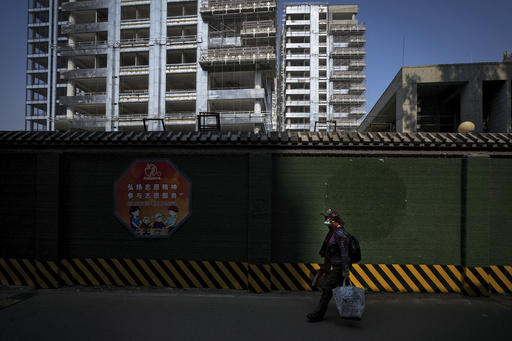
HONG KONG – In September, China’s export growth experienced a significant slowdown, reflecting a decline in global demand and raising concerns regarding the nation’s economic recovery.
According to the data released by Chinese customs, exports only increased by 2.4% in dollar terms compared to the same month last year, a stark contrast to the 8.7% growth witnessed in August. Imports showed a minimal rise of just 0.3% during the same month.
Economists had predicted a more optimistic increase of approximately 6% in exports and a slightly more robust 0.9% uptick in imports.
China’s trade surplus narrowed to $81.7 billion in September, down significantly from the $91 billion surplus recorded in August.
Since the conclusion of the COVID-19 pandemic, Chinese authorities have been grappling with efforts to revitalize the economy.
The recent enforcement of increased tariffs by the U.S. and Europe on Chinese exports, particularly in electric vehicles and other goods, has cast a shadow over the outlook for China’s trade as a fundamental growth engine.
The subdued growth in imports is indicative of weak domestic demand, which is partially attributed to an ongoing slump in the property sector — a major contributor to consumer spending across various sectors.
Additional data released indicated signs of declining inflation rates and falling wholesale prices for manufacturers, suggesting broader economic challenges.
In response, Beijing’s policymakers have implemented various measures aimed at rejuvenating the economy, including a preemptive allocation of 200 billion yuan (around $28.2 billion) from next year’s budget for infrastructure and spending initiatives.
Over the weekend, the country’s Finance Minister Lan Foan reiterated the government’s openness to further actions to stimulate quicker growth.
However, the scale of these stimulus measures has yet to meet the expectations of economists who advocate for more substantial interventions to rejuvenate the struggling economy.
For the year up until September, China’s exports recorded a year-on-year increase of 4.3%, largely driven by a more than 20% rise in automobile shipments, as reported by ING Economics. Nevertheless, the overall trend indicates a deceleration in export activities.
Analysts noted that with the export sector losing momentum, a reliance on increased investment and consumer spending will be essential to achieve the government’s goal of approximately 5% economic growth this year.
If the government proceeds with its plans to enhance spending, it may stimulate a surge in imports of essential goods, including industrial supplies, according to Zichun Huang from Capital Economics.
Earlier this year, the export sector played a pivotal role in supporting Chinese manufacturers.
Zichun Huang expressed confidence that shipments would continue to remain robust in the short term due to improved export competitiveness. However, he cautioned that increasing trade barriers may pose a greater challenge in the long run.
